
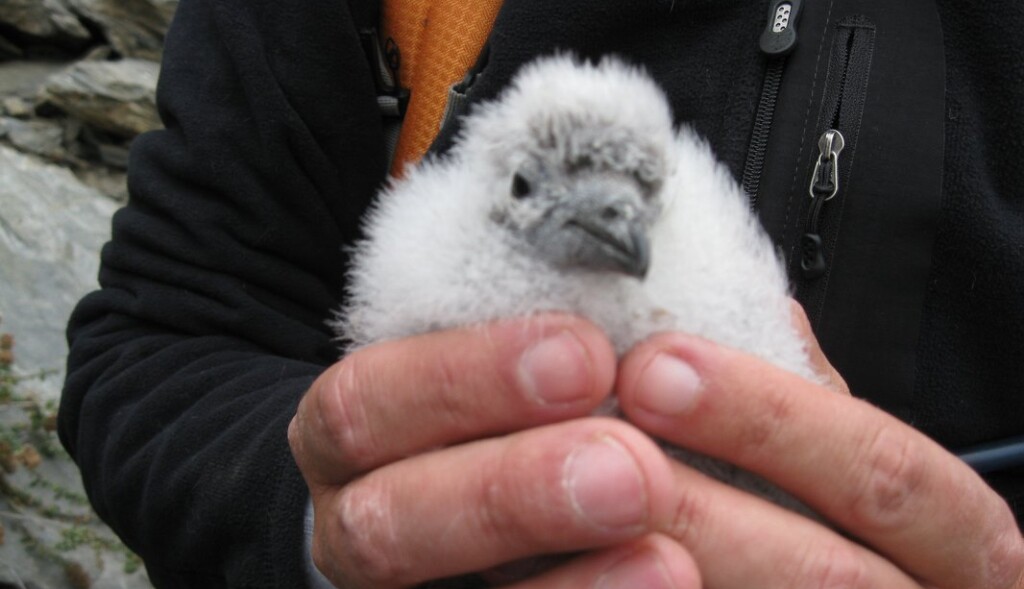
For the first time in over four decades, Peruvian diving petrels known locally as ‘yuncos’ have four active natural nests on Chañaral Island after a dedicated conservation group cleared the island of invasive species.
This unique Chilean ecosystem has seen a resurgence in its seabird population following the successful removal of invasive rabbits in 2017, and the achievement is the result of a collaborative effort between Chile’s National Forestry Corporation (CONAF), Laboratorio de Ecología y Diversidad de Aves Marinas from the Universidad Católica del Norte, and one of the most serially successful wildlife organizations on Earth—Island Conservation.
Last year, the partners announced the first seabird chick born on the island in over 40 years.
The team discovered four active natural nests, including two with chicks, one with an adult, and a fourth with a fledgling. This breakthrough offers hope for a species that was classified as “Endangered” by the International Union for the Conservation of Nature (IUCN) just four years ago.
Thanks to the removal of invasive species and social attraction efforts, this seabird is now classified as just “Near Threatened”.
“The return of seabirds to Chañaral Island is not only important for the species population, but vital to the overall ecosystem health,” said Island Conservation Island Restoration Specialist María José Vilches.
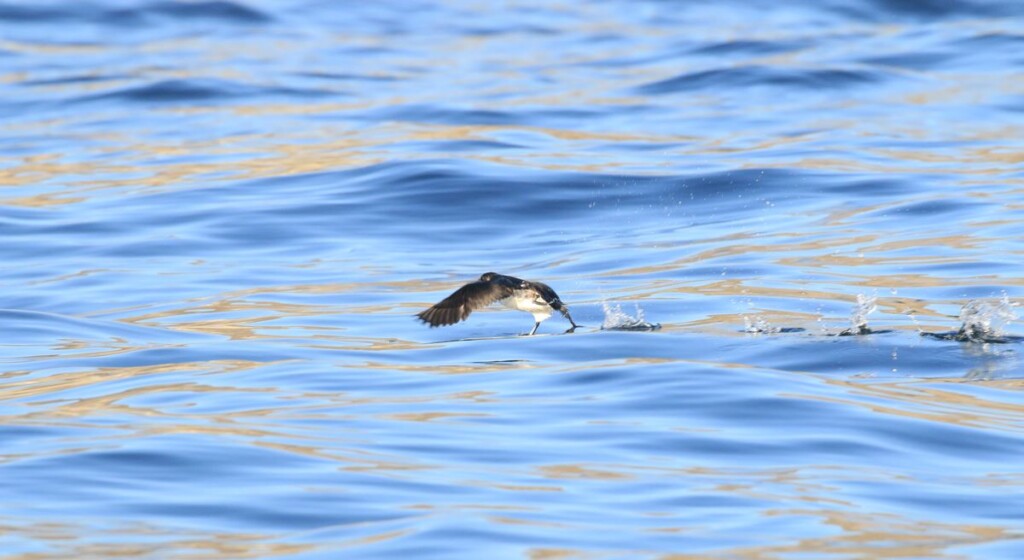
“Seabirds are critical connectors between the land and the sea, fertilizing the soil with their guano and nourishing the near-shore marine environment. It is incredibly encouraging to see the petrels returning to their island home to nest.”
Following the removal of invasive rabbits, scientists at Island Conservation implemented social attraction tools to encourage birds to return. This included solar-powered speakers that play petrel calls, a sign to passing individuals of high-quality nesting habitat nearby.
“The success of the social attraction tools used in the restoration of the Peruvian diving petrel colonies on Chañaral Island has been supported by evidence from parallel sites without sound systems where no signs of petrels have been recorded,” said Chañaral Island Park Ranger in the Humboldt Penguin National Reserve, Cristian Rivera.
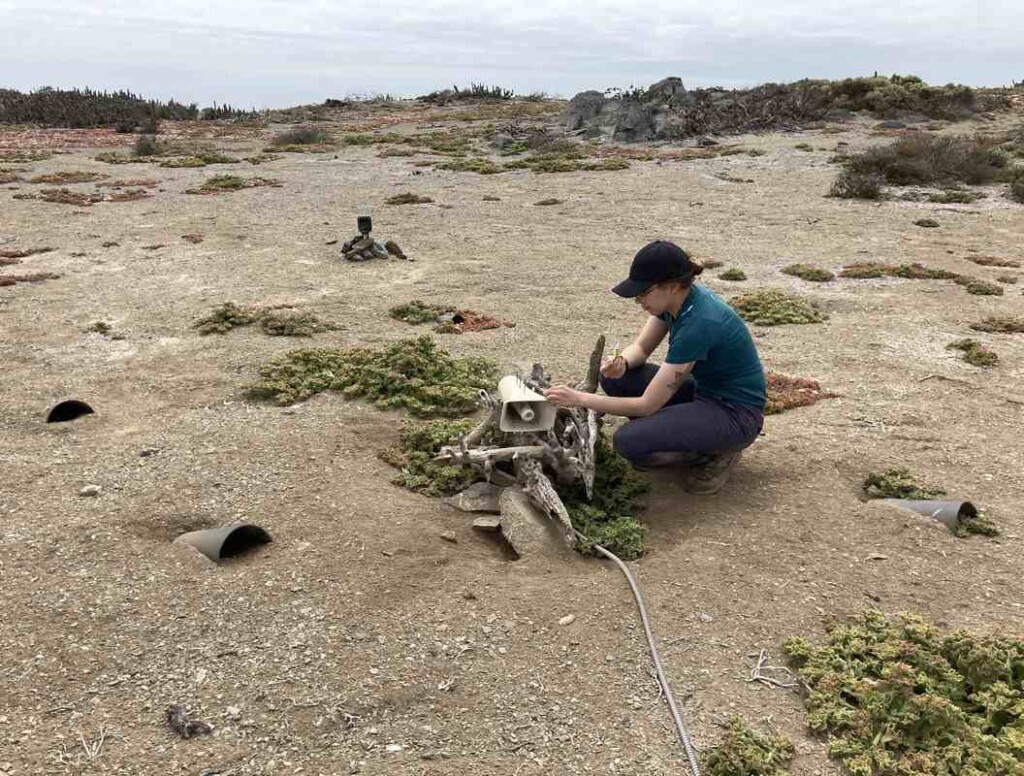
“These innovations are the first of their kind on a Chilean island and demonstrate the effectiveness of this tool. Within two days of the sounds systems being implemented, petrels began arriving to explore the island.”
Chañaral Island was once home to a thriving reproductive colony of Peruvian diving petrels until the introduction of invasive rabbits and foxes in the last century led to their local extinction, wiping out approximately 100,000 pairs. Invasive foxes fed on the native seabirds while invasive rabbits eroded their nesting habitat. Though invasive foxes were removed decades ago, invasive rabbits persisted, degrading the habitat and preventing the petrels from nesting.
“Once invasive species have been removed from islands, seabird populations can be—and have been—restored with remarkable success,” said Island Conservation Conservation Program Science Manager Coral Wolf. “We’re beginning to see this on Chañaral Island, and I can now envision a not-too-faraway future where we carry these sound systems away, when the birds don’t need them anymore.”
The greatest conservation story ever told
The Humboldt Penguin National Reserve, which encompasses Chañaral Island, is now free of invasive mammals, creating a favorable environment for the recovery of the Peruvian diving petrel colony and the island’s health, but this is just one chapter in a long, often untold story.
Reporting on the climate crisis became one of the most popular beats for journalists around the world, and the term “sixth mass extinction” quickly and repeatedly found its way onto front pages across the West. It’s not even close to an appropriate term, though, since the previous 5 mass extinctions involved the die-off of 70% or more of all species on Earth.
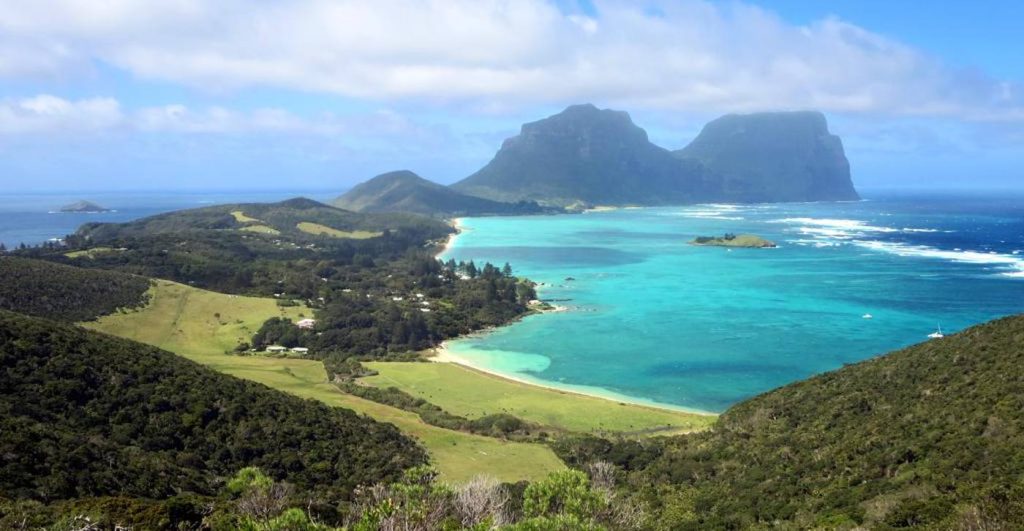
But even if there are parts of the globe where that term accurately describes the degradation of the natural environment, just on its own, the success of protecting and restoring isolated island ecosystems experienced in the last 2 decades merits the abandonment of the phrase “sixth mass extinction.”
For example, GNN has reported on successful eradication campaigns of invasive species on the islands of, Macquarie, Lord Howe, Tetiaroa Atoll, Redonda, Sombrero, and Hawadax. When the Kyoto Protocol for biodiversity targets set between the decade 2010 and 2020 came due, the only goal that was considered achieved was the eradication of invasive species; mostly on islands.
The report cites 800 invasive mammal eradications on 181 islands worldwide, ensuring the survival of 236 native terrestrial species, and even more seabirds. Island Conservation, the non-profit working on Chañaral, has on its own successfully restored 65 islands worldwide, benefiting 1,218 populations of 504 species, and subspecies, with recent examples on Kamaka in French Polynesia, Ngerkeklau Island in Palau, and the Wallis and Futuna Islands.
Island Conservation reports there have been over 1,000 island invasive species removal projects worldwide, “all resulting in long-term benefits to native species and other 851 seabird restoration projects targeting 138 seabird species,” the organization stated recently.
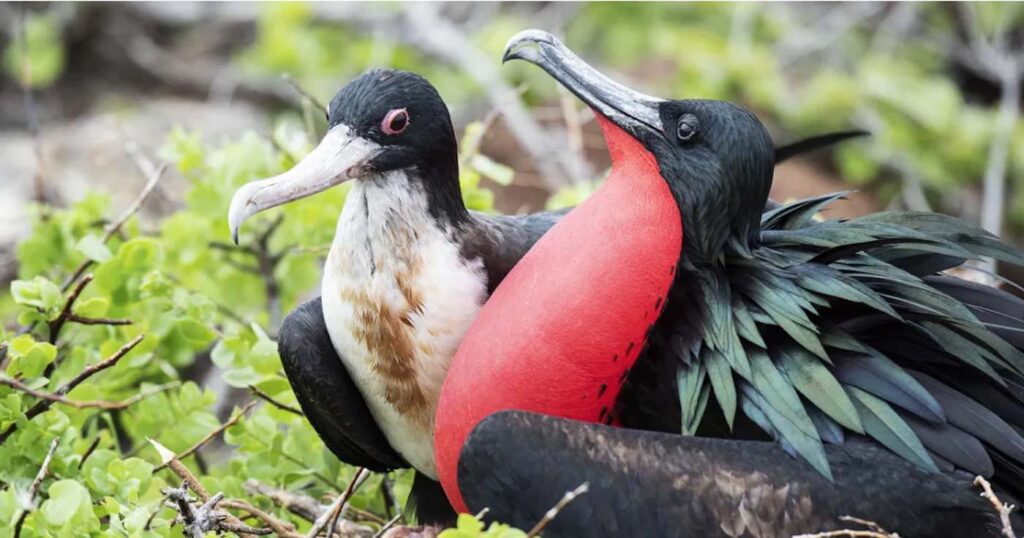
On the Galapagos archipelago alone, giant tortoises have been restored from the very brink of extinction to their native habitat on Española, land iguanas were returned to Santiago Island for the first time in 200 years, and eradication programs restored the native habitat on Seymour Norte and Mosquera islands, befitting seabirds like those above.
In 2020, the UK government established the Atlantic Ocean’s largest marine protected area when they enclosed the 200 square kilometer island of Tristan da Cunha, and 700,000 square kilometers of ocean—an area three times as large as Britain.
Far from there being a sixth mass extinction event taking place, newspapers might be missing what’s becoming the greatest conservation story ever told.
TELL The Greatest Conservation Story Ever Told With Your Friends…